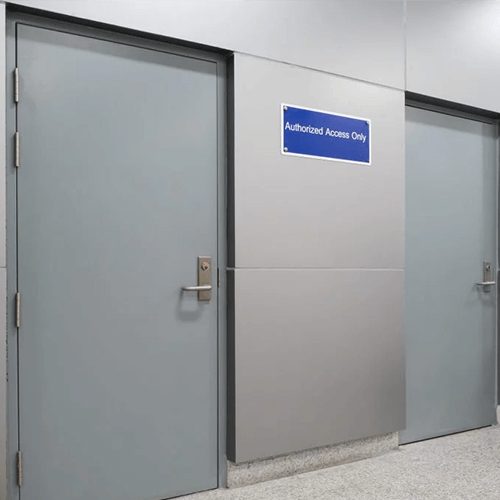
The wrong door hinge can affect a commercial metal door’s application. A heavy door must have a hinge that can adequately bear its weight, extensive use, and corresponding wear and tear.
Many manufacturers recommend a continuous hinge because it is designed to distribute weight evenly, minimizing stress on the door. Several applications can benefit from a continuous hinge, such as commercial electrical doors, blast doors, and wholesale doors. But why is this type of hinge so popular?
A continuous hinge is also known as a piano hinge. As its name indicates, it is a continuous element that contains two leaves attached by a central stainless steel or brass pin. It runs the length of a box lid or door. It got its nickname because it is used to secure the top of a piano in place, but it has numerous commercial uses.
A continuous hinge may also be found on the following:
Continuous hinges are often used for these applications because it supports the entire box, door, or bench length. Aluminum, iron, brass, and stainless steel are common materials used to make these valuable hinges.
You can find hinges in many sizes and designs, with some small enough to fit a jewelry box. Each type is designed to meet the needs of various applications of different styles, sizes, and lengths. However, continuous hinges stand apart from the others due to their height and unique usage.
Two primary types of continuous hinges are aluminum geared and pin and barrel hinges. Geared continuous hinges are mainly used in high-traffic areas, like businesses or offices. Their gears fit under a cap that runs the entire length of the hinge.
Pin and barrel hinges are made with a long barrel running the entire hinge length and have a pin inserted in the barrel. They are similar to traditional hinges and may have edge protectors that wrap around the door to create more strength.
There are numerous benefits to using a continuous hinge over shorter, less durable hinges. These hinges can be custom-cut to match the length of any door that must pivot.
A continuous hinge can blend with the whole unit to create maximum support along the size of the door, ensuring that it is perfectly aligned with the frame. It also helps evenly distribute the weight throughout the length or height of the door.
Using a continuous hinge for your commercial metal door has other significant advantages, like maintaining the door frame's position to reduce wear and tear. A continuous hinge will distribute pressure as the door opens and closes and can be designed to make tampering with it more challenging.
Other benefits of a continuous hinge include the following:
Continuous hinges offer many more benefits than a traditional hinge, making it an ideal solution for your commercial metal door.
While continuous hinges have multiple advantages, there are several disadvantages.
Continuous hinges are made from metals, making it easy for them to rust or become corroded. These issues often occur in commercial doors exposed to high moisture levels because the water vapors find their way into the hinge leaves and knuckles. You can prevent this issue by regularly lubricating your hinges.
Continuous door hinges have smaller screws than other types, like strap and butt hinges. The smaller size makes it easier for these hinges to pull away from the door assembly.
Although continuous hinge installation is relatively easy, it may require multiple people. One person must hold the hinge components together as another person screws the door hinges into place.
Because continuous hinges are long and narrow, they easily bend. If a delivery arrives bent, you can quickly bend them back into place.
Are you ready to replace your commercial metal door and have a few questions? Contact CDF Distributors today!